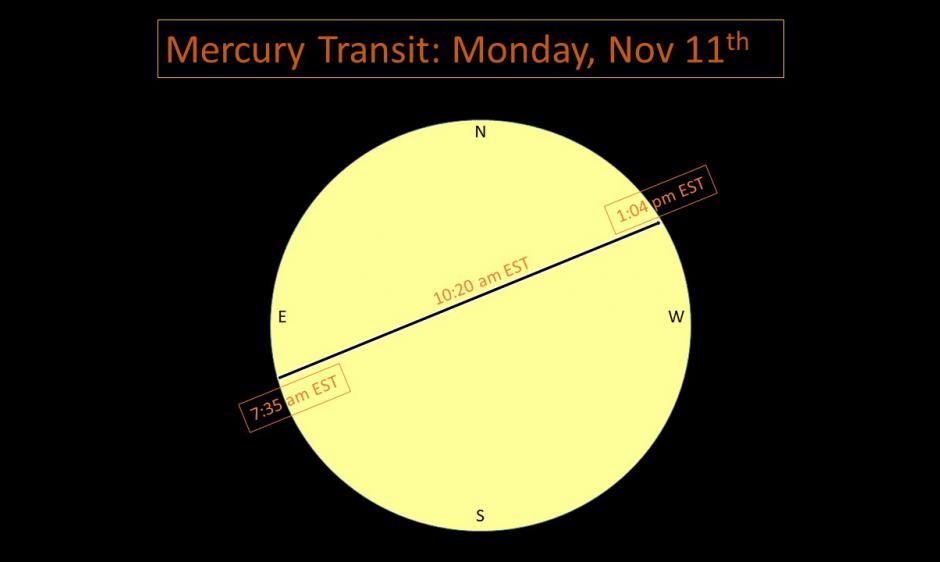
The planet Mercury will transit across the solar disk on Monday, November 11th, 2019. Weather conditions permitting, this quite rare celestial event will be visible in its entirety across the eastern portion of the United States and at least in part over the remainder of the country. Transit time begins at 11/1235 UTC (07:35 am EST) and ends at 11/1804 UTC (1:04 pm EST).
IMPORTANT: this event cannot be seen with the naked eye and any attempt to do so would be extremely dangerous and likely cause blindness; rather, it can only be viewed via safe methods (i.e. approved solar filters or a proper white light projection system). Additional tips for safely viewing the Sun during this event are provided by NASA and JPL at the following links:
https://www.jpl.nasa.gov/edu/events/2019/11/11/watch-the-transit-of-merc...
https://nightsky.jpl.nasa.gov/download-view.cfm?Doc_ID=653
Mercury will first become visible as a small, dark silhouette entering over the east limb of the Sun and gradually move across the solar disk until it exits the west limb [the east/west directions on the Sun are reversed from what you are used to on Earth-based maps]. The transit will appear like a small sunspot moving across the Sun and take approximately 5 1/2 hours. Depending upon how you safely choose to view the transit, Mercury could appear to cross the Sun in orientations different from the provided diagram. Of course, the safest way to view the event, and an alternate method for those under clouds, is to monitor the transit's progress as observed by the NASA Solar Dynamics Observatory (SDO) satellite. NASA has created a website to do just that at: https://mercurytransit.gsfc.nasa.gov/2019/
The next Mercury transit will not be until the year 2032.